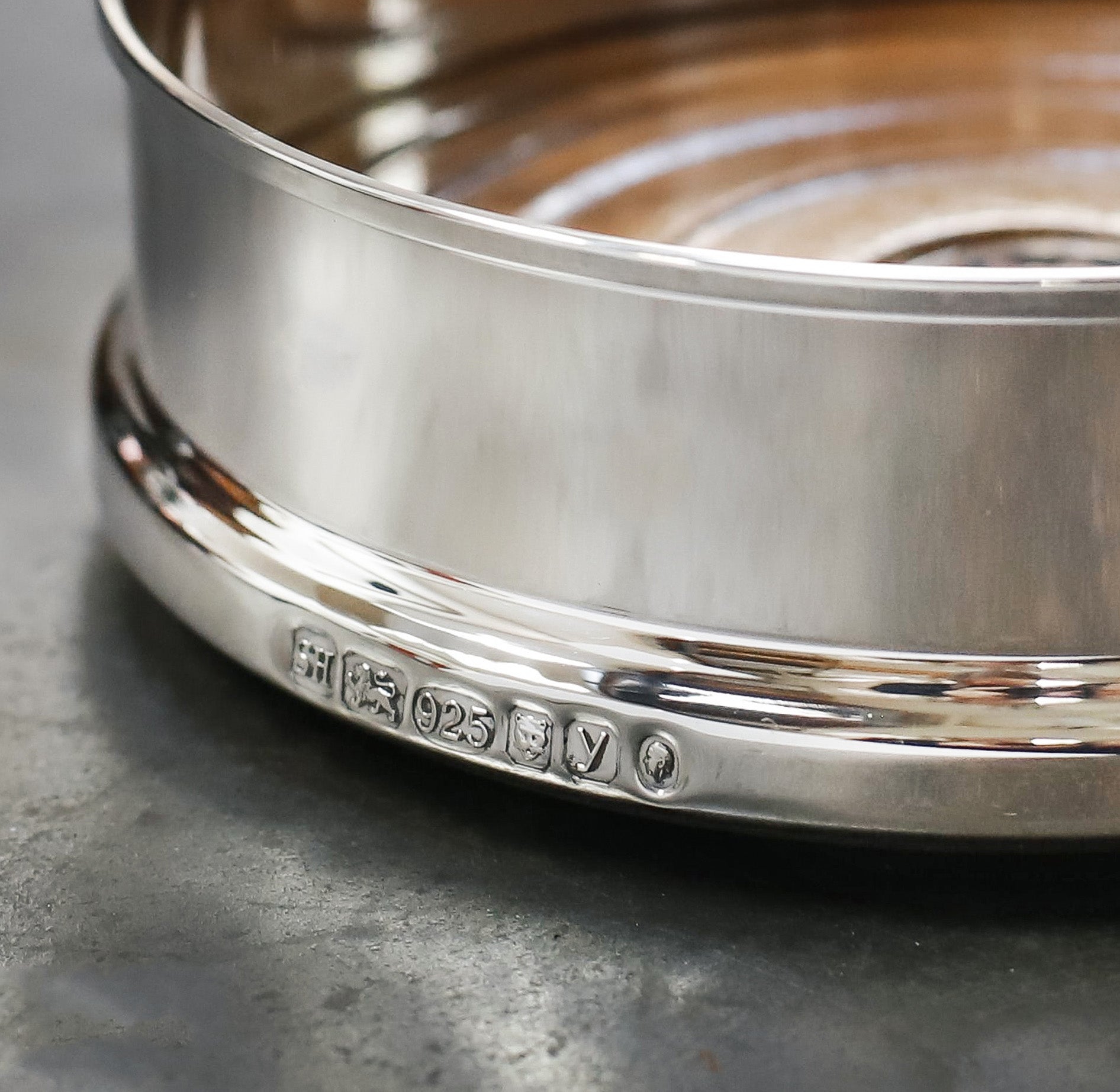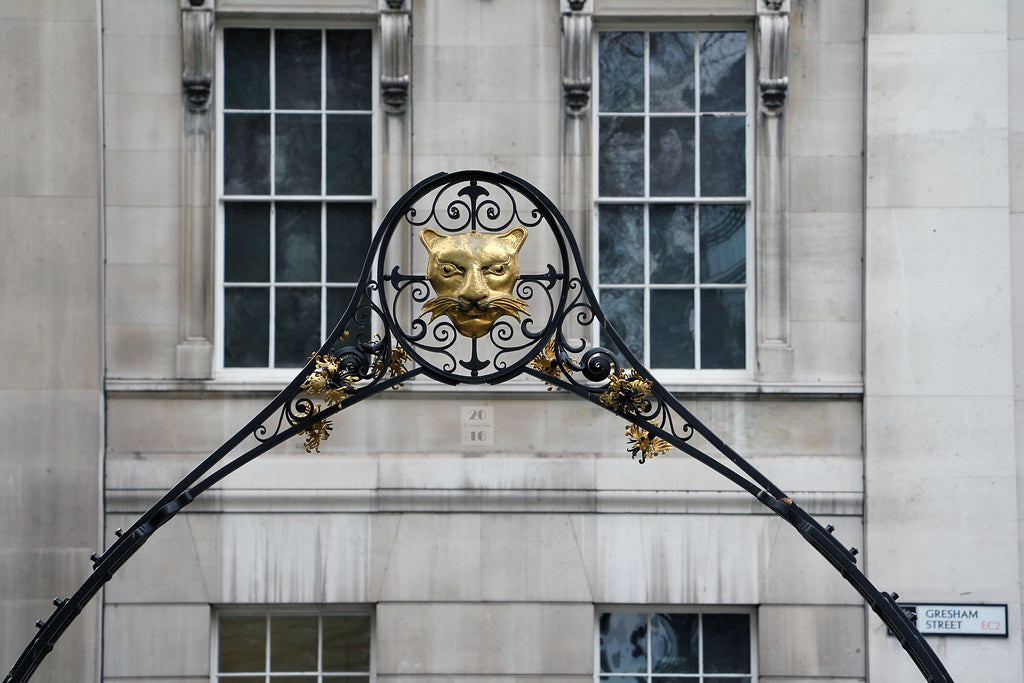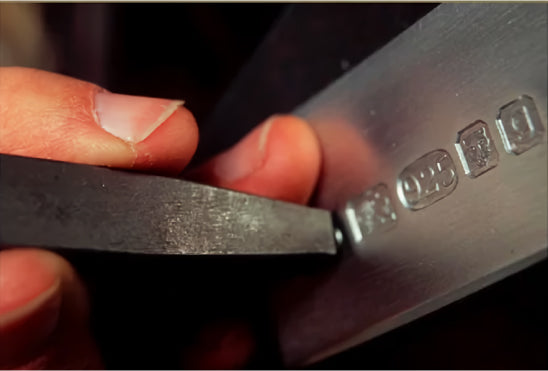
What is a Hallmark?

The hallmark is a set of component marks applied to items made of gold, silver, platinum or palladium. It takes its name from Goldsmiths’ Hall, where Hallmarking began more than 700 years ago, and can tell you when and where an item was tested and marked, which metals it is made from and their purity or fineness, and who submitted it for Hallmarking.
Hersey products are hallmarked at the Goldsmiths’ Company London Assay Office who apply the full traditional UK hallmark, which is made up of five component marks.
Who made it?
The sponsor's mark identifies the company or person responsible for sending the article for hallmarking. Often the Maker but it also could be a retailer or wholesaler.

What is it made from?
The millesimal fineness (purity) of the precious metal content in parts per 1000. In this example 925 parts per 1000 (92.5%) represents the sterling silver standard recognised in the UK. The lion passant is a voluntary mark.

Where was it made?
This symbol shows which of the four Assay Offices in Birmingham (Anchor), Edinburgh (Castle), London (Leopard) or Sheffield (Rose), tested and marked the item.

When was it made?
This symbol shows the year in which the article was hallmarked. The date mark is voluntary, not compulsory and may not be applied on small items. ( Y is the letter for 2023).


Take a look at this short film to find out what to look for when buying precious metal items.
THE PURPOSE OF HALLMARKING
Hallmarking is there to protect both the consumer and the trade silversmiths, goldsmiths and jewellers who rely on the trust factor and quality guarantee that hallmarks provide.
The hallmark is one of the oldest forms of consumer protection in the world and its history can be dated as far back as 1300, when Edward I demanded that all work in precious metals be struck with the leopard's head mark which is still the symbol of the London Assay Office today.
The first Goldsmiths' Hall was built in its present location in the City of London in 1339 and it is from there that the "Guardians of the craft" went from shop to shop to test and mark the wares and the word "Hallmark" is thought to derive.
Techniques for assaying (determining the quality of) precious metals have changed over the years and these days the work can be struck with punches or marked with a laser to show that the metal has passed the "touch test" where a small amount of metal is removed by rubbing on a stone or scraping it from the piece before a chemical is applied and the reaction measured to indicate the fineness before further testing in the laboratory. More commonly these days the preferred method is the X-ray fluorescence (XRF) spectrometer which determines the purity of the metal in a less destructive way.

SETTING THE STANDARD - MILLESIMAL FINENESS AND CARATS
There are three compulsory hallmarks: THE SPONSORS MARK, THE ASSAY OFFICE MARK and perhaps most importantly THE STANDARD MARK.
The standard mark shows the millesimal fineness (purity) in parts per thousand. So for instance the old 18 carat gold standard would be marked 750 as it equates to 750 parts per 1000 of pure gold. This, and all of the hallmarking standards and some other interesting information is well explained in printable format on the London Assay Office website here.
Hallmarking Hersey Silverware - A short film from 2008 - We know the year because we checked the hallmark!

HALLMARKING
A beautiful video showing how our handmade jewellery and gifts are assessed and hallmarked by the London Assay Office. This ensures all our silver is certified to be high quality.

MILLS & HERSEY
20 AUG 1970 - 18 AUG 1981

M C HERSEY
18 AUG 1981 - 25 JUL 2011

PRACTICAL SILVER
29 JUN 1998 - 29 JUN 2018

STEWART HERSEY
8 AUG 2007 - Present

HERSEY HALLMARKING FACTS
- Since the 29th September 1998 we have submitted in excess of 515,812 items in 4375 packets to the London Assay Office for Hallmarking.
- In 1981 we introduced the MCH (MC Hersey) sponsors mark which we used until 8th August 2007.
- Records pre September 1998 are not computerised, so it is difficult to estimate, but we were submitting work for 28 years on a regular basis before we started counting!
- For a period between 29th June 1998 and 8th August 2007 we sometimes used the sponsor's mark PS (Practical Silverware).
- Our first hallmark was registered on 20th August 1970, it was M&H which stood for Mills and Hersey and was used until August 1981.
- From the 8th August 2007 to date we use the mark SH (Stewart Hersey).
BEWARE OF BOGUS SELLERS & IMPORTERS
Online websites and marketplaces are full of bogus sellers and importers describing their goods as silver or gold. Often these articles are simply plated with precious metal over another metal such as brass, even worse they might just be gold or silver in colour! The law is on your side in this case as stated on The Goldsmiths' Company Assay Office website..
"It is against the law in the course of a trade or business to sell or describe precious metal articles in the UK that are un-hallmarked and above the weight exemptions. Trading Standards Officers have the power to seize any items that do not comply with the 1973 Hallmarking Act, which can lead to prosecution and a fine of up to £5,000 per article."
Luckily for the culprits they are not faking hallmarks and living in the 18th century as in 1757 counterfeiting hallmarks became a felony, punishable by death. Nowadays they would get a stiff fine and possible prison sentence.
So when should a precious metal article be hallmarked? If the item weighs less than a stipulated amount it is not compulsory to add a hallmark. Some of our smallest pieces have no room for a full hallmark and will carry a simple 925 mark which meets the legal requirement for weight threshold as follows. Gold I gram - Silver 7.78 grams - Platinum 0.5 grams - Palladium I gram.

HALLMARKING & THE LAW TODAY
The 1973 Hallmarking Act outlines the legal requirements for assaying, hallmarking and selling of precious metal items in the UK.
There are three main areas with which a retailer selling precious metal items to UK consumers must comply:
- Ensuring items that are not exempt carry a recognised hallmark.
- Ensuring precious metal descriptions are accurate.
- Ensuring that the mandatory Dealers Notice is displayed for consumers

